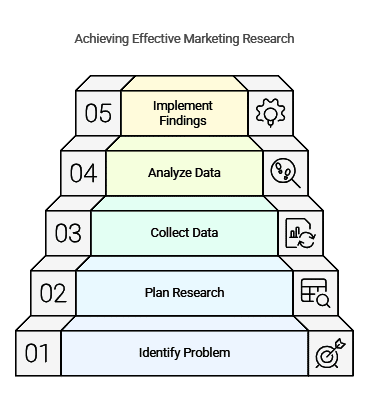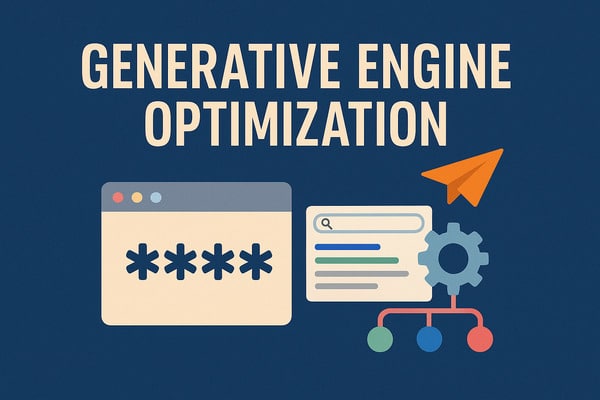Marketing is constantly changing, so every business owner must understand the importance of following trends and being aware of all the latest innovations to ensure their company thrives. Marketing research is a helpful tool that should be incorporated into one’s working process. Using the data obtained from the research, strategies can be planned for your company’s benefit.
However, what if you’ve never done that and are unsure how to prepare for the process correctly? No worries, IntlTech has your back! In this article, we’ve explained all the vital steps in the marketing research plan to ensure it’s successful and demonstrates decent results. Continue reading to understand how to bring your business to a new level of success!
The Definition of the Marketing Research
Marketing research can describe any technique or set of actions used to collect information and understand the target market of the company better. Market research findings can be used for numerous purposes, such as product improvement, UX enhancement, a better understanding of the target audience, and countless others. This research aims to understand customers’ needs, analyze how they react to different features and innovations of the business/product, and provide them with goods that will make them happy and fulfill their desires as customers. Bringing one’s business to the next level is almost impossible without a well-planned strategy, so let’s take a closer look at the main steps of a successful marketing research project.
5-Step Marketing Research Process Guide for Your Business
To save time and money and create a well-performing marketing strategy, you must perform a marketing research process to collect all the important data and use it later in your business. Below, we will provide you with an easy guide on how to do it on your own and use the data to achieve better results.
#1. Identify the Business Problem or Goal for the Research
This step is vital for successful research, as all other steps are based on it. Consider the main principles of your company, take a closer look at each of its components, and define the ones that need improvement. Try these methods:
- Turn questions into goals. For example, you have a problem with your sales. Consider what topics can be researched to find the root of the issue. Ask questions like Why? What? How? to understand what information you should look for;
- Try to imagine the end goal. Imagine what the end product should look like. This way, you will see what your business lacks and understand what challenges await you on your road toward the desired product you want your customers to enjoy. This way, you’ll have the base for your study for collecting data that should be used in the following steps.
#2. Create the Plan for Your Marketing Research Process
After the problem is defined, you may start thinking about creating your research plan. During this stage, you must consider what type of research you would like to conduct, which sources you would use, and other essentials important for good results. What can be helpful during this stage?
- Surveys. These are helpful to get needed information faster and easier from your clients;
- Interview your clients. Direct conversations with customers are one of the best ways to gather all the required information straight from the source. You may even create different focus groups to compare the answers and point out the best steps for improvement. Make sure research objectives are clear and understandable so you can perform both qualitative and quantitative research;
- Testing. Review your analytics and test the website to compare your current results with the plan and calculate what steps can be taken to achieve all the goals. You may use various analytic tools, such as Google Analytics or HubSpot Analytics.
#3. Create Data Collection for the Research
The next step while conducting market research is collecting and analyzing all the data obtained from the customers. This process may take some time, as well as bring some challenges, so we have some recommendations that may help you make data collection easier:
- Set a deadline. Data collection should be performed in a short period. That will minimize sudden changes that may occur in the information due to factors that are out of your control, such as new competitors that have recently joined the market, thus statistics from the gathering period will be clearer;
- Examine the primary data. This will help you understand that the information you’re getting from your research can actually help you solve the problem that you set in the first place. By looking at that, you decide whether any adjustments are needed and follow the process if everything looks good;
- Send a reminder to those who help you with the research. If you gather the information from your customers and prefer an online form to gather the information, send them a polite reminder with an indicated deadline. You may plan a few of those, the last one shortly before the deadline, to ensure you gather all the helpful information.
#4. Analyze the Data and Conclude the Information
After gathering primary and secondary data, you may define the problem one more time and analyze data regarding how it may help deal with the particular issue you’d like to solve in your business. If the information is not relevant to your case or can’t be used for your research problem, don’t try to make it suit your needs.
Think about how you may use this qualitative data, or consider alternative ways to collect the information to make it more relevant to your particular case. Writing the study summary may be a good way to give your research more structure and define the next step to continue your marketing study. Some visual representations may also be useful in the form of tables and charts.
#5. Use the Information You’ve Got from the Research
This is the last step, where you collect all the relevant data and use it to make your business thrive. Typically, this is where the company should start a marketing campaign. If the research was performed properly, you should have found solutions to your customers’ problems, eventually leading to a better experience and higher customer satisfaction with your business.
But remember that the trends are changing constantly. Thus, you must conduct such research regularly to ensure your business is up to date and offers more than your competitors. The marketing process is not an easy thing, but it’s definitely exciting!

F.A.Q.
What Is the Purpose of the Marketing Research Process?
The main purpose of the marketing research process is to keep your business current, gain valuable insights, and get important information about your business’s needs that can eventually affect the customer experience with your brand. In order for the process to be successful, it must have structure, which is where marketing research gets very useful. To get better results, we recommend concluding all the collected data in the end; the best way to do it is by creating charts and tables where there’s a clear visual representation of everything that was collected.
Why Is Marketing Research Important?
Trends in the market and the business world in general are constantly changing. In order to evolve and see the real progress, staying up to date is vital. Besides, don’t forget about the customer experience, which defines the success of the company. If clients are satisfied with the service, they will return and spread the word about it, which is far more important than you may think. So, by performing marketing research, you gather all the essential info to ensure your business is moving forward.
Can I Do the Research on My Own?
Of course, if you understand how to set research questions and know exactly what a business’s goals are, you may do it on your own. However, if you’ve never done that before and are not sure where to start, we recommend using the services of a research specialist. They may explain all the peculiarities of the process to you, give helpful tips and tricks, and share some valuable information regarding your brand in particular.
What Are the Main Benefits of the Marketing Research Process?
The main benefit of marketing research is that it helps you bond closer with your clients. By understanding their needs, issues they experience, as well as their desires, you know exactly what to offer to ensure they are happy and ready to return to your company again in the future. Besides, it’s a perfect way to stay ahead of your competitors and be aware of all the latest trends to incorporate into your business. And, of course, don’t forget that this method is cost-effective, so you get excellent results without spending a fortune on the analysis itself.






